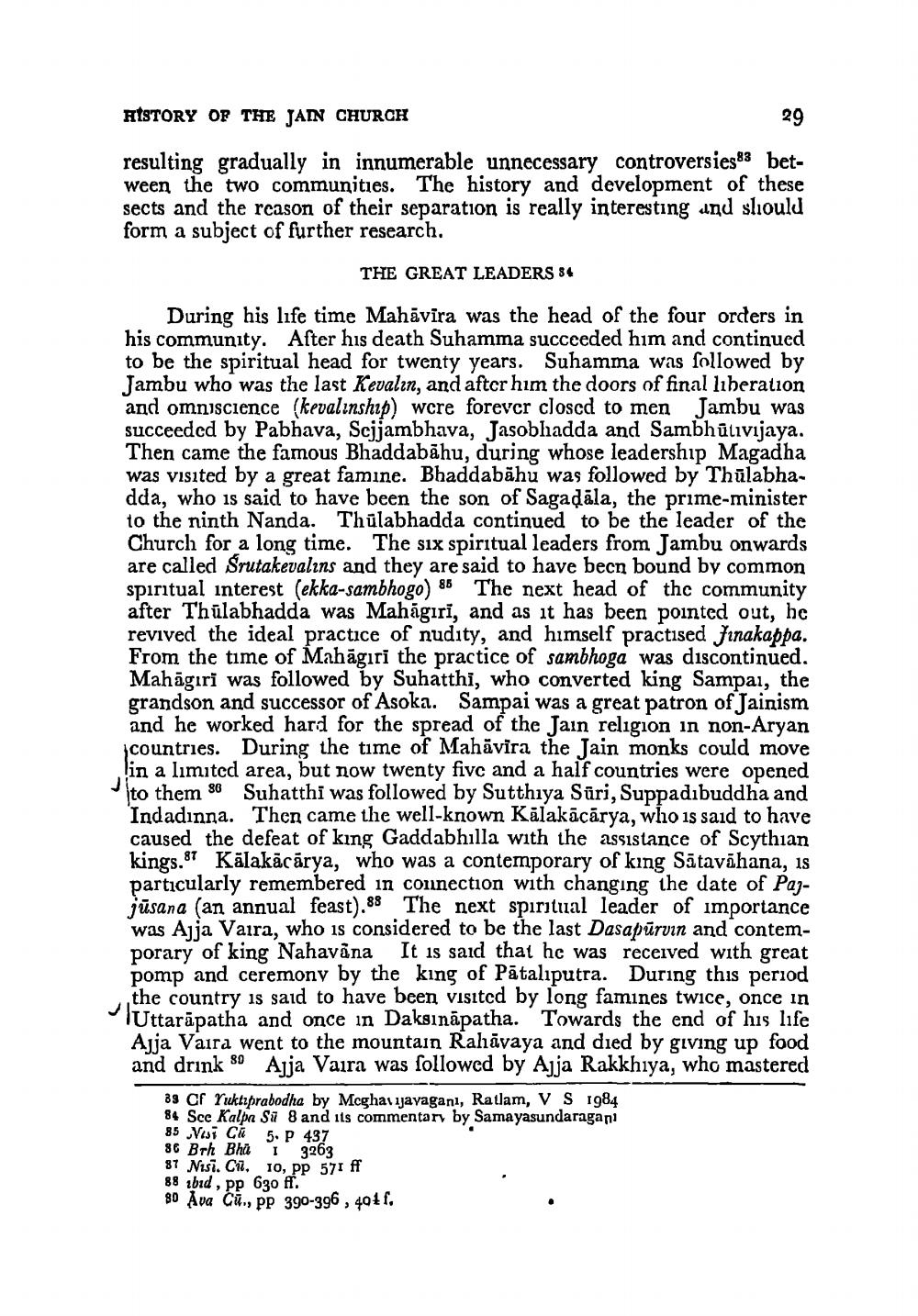________________
AISTORY OF THE JAIN CHURCH
29 resulting gradually in innumerable unnecessary controversies8 between the two communities. The history and development of these sects and the reason of their separation is really interesting and slıould form a subject of further research.
THE GREAT LEADERS 84
During his life time Mahāvīra was the head of the four orders in his community. After his death Suhamma succeeded him and continued to be the spiritual head for twenty years. Suhamma was followed by Jambu who was the last Kevalın, and after him the doors of final liberation and omniscience (kevalınship) were forever closed to men Jambu was succeeded by Pabhava, Scijambhava, Jasobhadda and Sambhūlivijaya. Then came the famous Bhaddabāhu, during whose leadership Magadha was visited by a great famine. Bhaddabāhu was followed by Thūlabhadda, who is said to have been the son of Sagadāla, the prime-minister to the ninth Nanda. Thūlabhadda continued to be the leader of the Church for a long time. The six spiritual leaders from Jambu onwards are called Srutakevalins and they are said to have bech bound by common spiritual interest (ekka-sambhogo) 85 The next head of the community after Thūlabhadda was Mahāgıri, and as it has been pointed out, he revived the ideal practice of nudity, and himself practised Jinakappa. From the time of Mahāgiri the practice of sambhoga was discontinued. Mahāgıri was followed by Suhatthi, who converted king Sampai, the grandson and successor of Asoka. Sampai was a great patron of Jainism and he worked hard for the spread of the Jain religion in non-Aryan countries. During the time of Mahävira the Jain monks could move lin a limited area, but now twenty five and a half countries were opened Ito them 86 Suhatthi was followed by Sutthiya Sūri, Suppadibuddha and Indadınna. Then came the well-known Kalakācārya, who is said to have caused the defeat of king Gaddabhilla with the assistance of Scythian kings.87 Kälakācārya, who was a contemporary of king Sātavāhana, is particularly remembered in connection with changing the date of Payjūsana (an annual feast).88 The next spiritual leader of importance was Ajja Vaira, who is considered to be the last Dasapūrvin and contemporary of king Nahavana It is said that he was received with great pomp and ceremony by the king of Pātaliputra. During this period the country is said to have been visited by long famines twice, once in Uttarāpatha and once in Daksınāpatha. Towards the end of his life Ajja Vaira went to the mountain Rahāvaya and died by giving up food and drink 80 Ajja Vaira was followed by Ajja Rakkhiya, who mastered
89 Cf Yuktiprabodha by Mcghavayagani, Ratlam, V S 1984 84 Sce Kalpa Su 8 and its commentary by Samayasundaragani 85 Yasy Cũ 5, P 437 86 Brh Bha 1 3263 87 Nisi. C1, 10, PP 571 ff 88 bid , pp 630 ff. 80 Ava Cü., pp 390-396, 401f,




